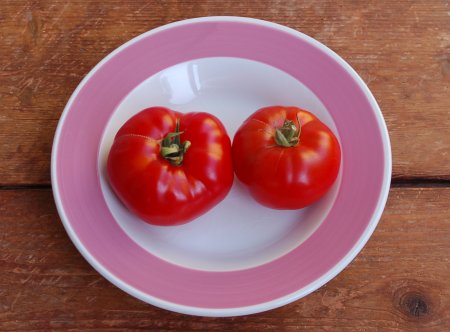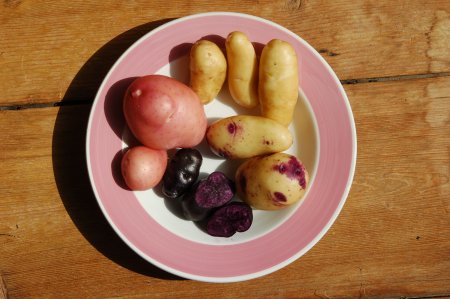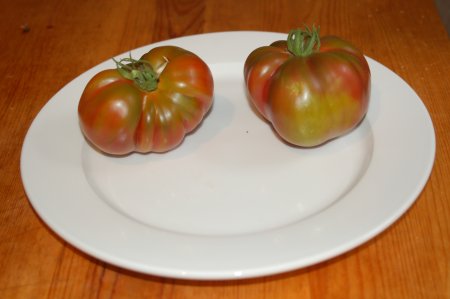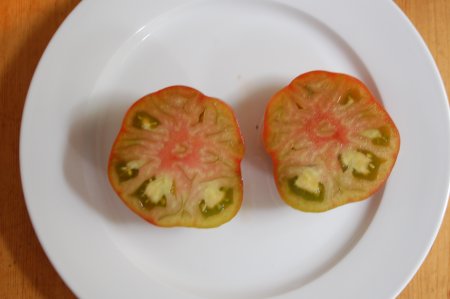
I made a previous post about the unique foliage on this tomato.
This tomato came from Søren of In the Toads Garden.
This plant turned out to be very interesting in many ways. First is was a very compact plant, that worked well grown in a container. While I normally use a larger container, I would say this tomato would probably grow well in 20 liters of dirt.
The unique foliage turned out to be unusually resistant to the usual diseases attacking the leaves of my plants like powdery mildew and the like. This plant showed no signs of infection when some of my other plants had early blight this year. Ashleigh of My Dutch Garden also grew this tomato. She reported that many of her other plants had serious damage from the wind this year, but not this one because the feathery light leaves didn’t catch the force of the wind.
Given the small size of this plant, it was very productive. This is also a determinate plant, giving it’s complete annual harvest within a short period of time.
This plant turned out to be a bit of a challenge for seed collecting, because the tomatoes didn’t have many seeds in them.
The taste of this tomato was only so-so. It was a bit mealy and lacked a very intense flavor. The lack of flavor may have to do with the unusually wet weather this year.




